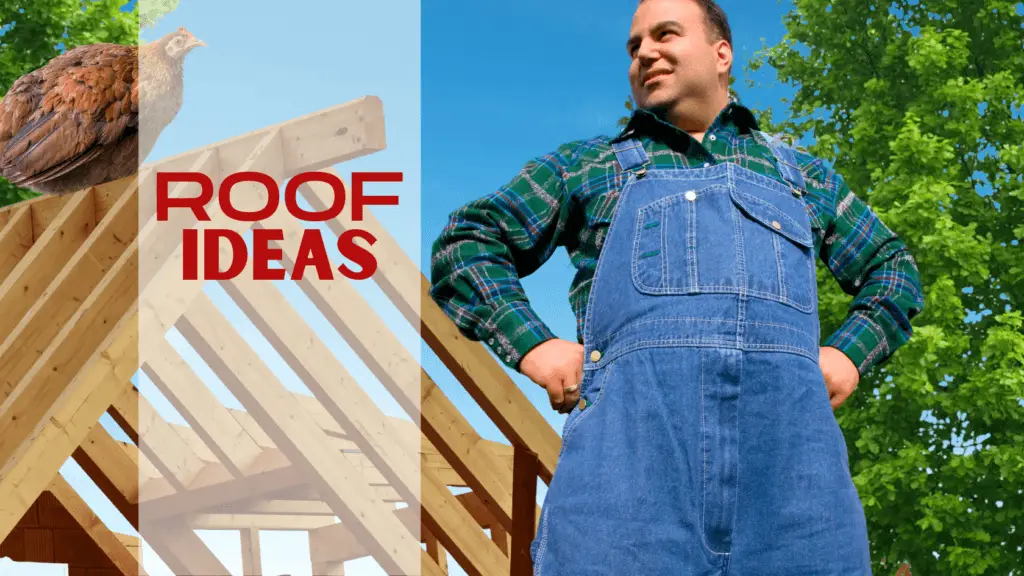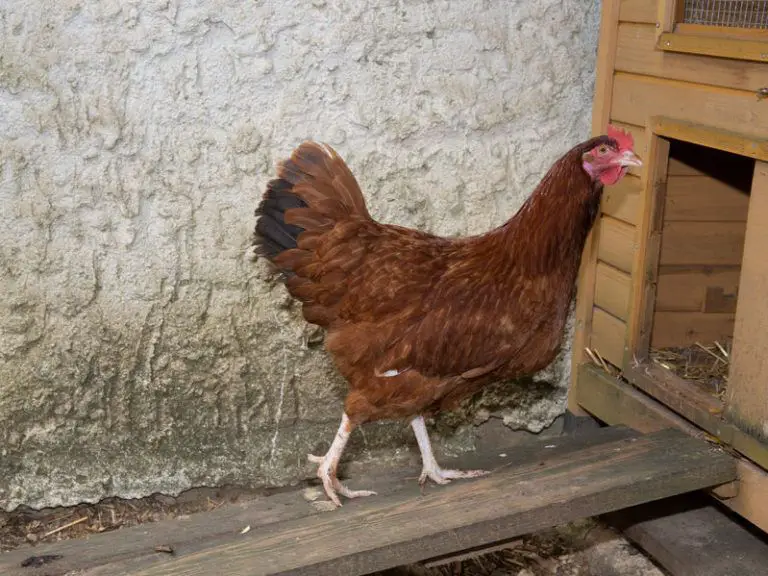Chicken Coop Roof Material – Which Types Are Best And Why
The Best to the Not-so-Good: Pros and Cons
Does your chicken “Taj-Mahal” feature the absolute best in interior and exterior design? What’cha got on top of that fancy-schmancy coop?
Chickeneers put a lot of work and money into building the best chicken coop yet forget to put a proper roof on top. Let’s put ourselves in our chicken’s “feet” and think about what it’s like inside the coop. Above a storm is churning, and before you know it, hail, heavy rain, and torrential winds are beating down. Now, imagine if that roof is a tarp or flimsy sheet of plywood. Are you shaking in your feathers? So, what is the best roof for a chicken coop?
Let’s get the right roof on top of your chicken coop, so your feathered friends are protected and happy. Chicken coop roofing material varies, giving you different options to choose from.
For a guide to other coop building design considerations, read our Chicken Coop Guide article.

Why Does a Chicken Coop/Run Need a Roof?
It’s reasonably apparent why your chicken coop needs a proper roof. Besides rain, wind, or hail, there are other variables to consider that can compromise your chickens’ health and protection.
Should I put a roof on my chicken run? A chicken run should have some form of protection against predators and the elements. In the summer, it provides shade to stay cool. During rain, snow, or hail, a roof offers protection. We don’t recommend using chicken run roof netting unless you are in an area where the sun and weather are a bit more forgiving.
Things to Consider Before Adding a Roof
Climate
A roof should be climate-appropriate. If you live in a region where it’s hotter than blue blazes in the summer, your roof should shield the summer sun and heat. On the other hand, if you live in regions where summers are fair, yet the winters are voracious, your roof needs to support snow and ice and keep the cold out.
Heat
Suggested roofing materials for hot climates:
- Metal
- Standard asphalt shingles (light colored)
- Corrugated asphalt
Cold
Suggested roofing materials for harsh winter climates:
- Slate shingles
- Asphalt shingles
Type of Roof
The type of roof on your chicken coop plays a significant role in choosing chicken coop roofing materials. When it comes down to roofing, the more surface you must cover, the more expensive it will be. Multi-angled surfaces will require more weatherproofing, thus more money. Also, should gutters be installed? Below are the most common types of roofs used in chicken coop designs.
Flat
-
One surface
-
If you live in a region that has a fair amount of snow, we don’t recommend a flat roof. The weight of snow and ice can cause it to cave in.
-
Flat roofs are not ideal for any chicken coop because rain, snow, or ice has no way to drain or escape. This causes the roof to leak, rot, or eventually give way.
Open Gable
-
Two surfaces
-
Most chicken coops have open gable roofs. This type of roof is fairly accommodating of any roofing material. Gable roofs are typical in all climates with an extensive array of various roofing materials.
Lean-to or Shed
-
1-2 surfaces
-
A lean-to roof is nothing more than a slant-oriented roof, which is simplistic in design. If you’re budget-minded, this roof can be easily covered with corrugated metal at little to no cost.
Gambrel
-
Four surfaces
-
Gambrel roofs are commonly found in outdoor garden sheds.
Saltbox
-
Two surfaces
-
Another typical roof found in chicken coops is the saltbox style. It’s a combination of basically two lean-tos (one short, one long.)

Chicken Coop Roof Ideas: Pros and Cons
Chicken coop roof materials differ in cost, performance, and ease in installing. We give you an overview of each material, the expense, and the pros and cons.
Not-So-Good: Plastic Roofing
Plastic roofing, like metal roofing, is easy to install. However, the lifespan of plastic is much shorter, requiring replacement or repairs. Plastic roofing is no match for the sun beating down on it, hail, and high winds.
Climate: best for very mild
Roof Type: flat, open gable, lean-to/shed, saltbox
Ease of Installing: Easy
Expense: $
Maintenance: Medium – High

Good: Wood
A lot of us are guilty of using a piece of plywood to cover our chicken coops. However, it’s not a long-term solution. In any scenario, whether hot or cold, exposed wood rots from retention of moisture from rain. If you live in a perpetual-arid region, wood may be the ideal solution for a roof.
Climate: best for arid, no humidity or rain
Roof Type: open gable, lean-to/shed, saltbox, gambrel
Ease of Installing: Easy
Expense: $$
Maintenance: High

Better: Metal Roofing
Metal roofing provides a durable covering for your chicken coop. If you are resourceful and a DIY’er, you can find piles of corrugated metal sitting unused that someone might be willing to get rid of.
Climate: best for mild
Roof Type: flat, open gable, lean-to/shed, saltbox
Ease of Installing: Easy
Expense: $
Maintenance: Low

Best: Shingle
Shingle roofing comes in various options, wood, slate, asphalt, or tile. Shingling your chicken coop offers added protection and insulation for your chickens year-round.
Climate: best for all climates
Roof Type: all types of roofs
Ease of Installing: Difficult (time-consuming)
Expense: $$$
Maintenance: Low-Medium

The Last “Cluck…”
So, you have some ideas under your belt on chicken coop roofing materials you can use. Choosing the type of materials you’ll use basically comes down to your climate, what degree of protection you want to offer your chickens and your budget.
Good luck with your roofing efforts. Happy “chickening!”
Now that you’ve got a solid roof, you may need some accessories for your flock’s abode…for ideas, see our article on chicken coop accessories.








